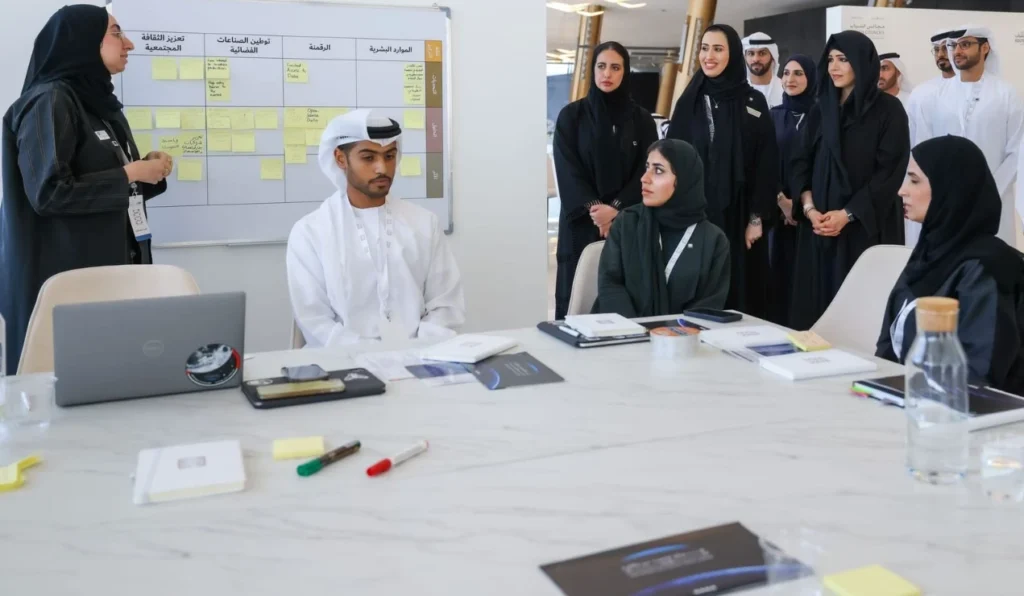Improving the Impact of Organizational Learning and Development
By Dr. Ehssan Abdallah and Rayan Tarabay
Today’s complex landscape has compelled organizations to continuously reinvent themselves. Fundamental to this, has been the quest to drive business growth through internal learning and development(L&D). However, this is laced with challenges. A recent study (Murray, 2021) found that just 8% of L&D teams calculate ROI for their learning programs. The central risks relate to costs and inability to measure their ROI. Nonetheless, L&D remains core when driving organic growth and building innovative capabilities. Thus, the challenge remains: how can organizations build and measure the impact of their L&D programs to fuel their growth agendas?
We have identified that the most effective learning and development programs focus on the following areas to address this enigmatic problem.

Step 1: Business-Centric Continuous Learning
Aligning an organization’s culture with its vision, mission and values is key for continuous learning and driving employee skill development. This may seem obvious, but many organizations are unbale to operationalize and drive this linkage. Mission-driven talent management ensures the alignment of learning initiatives and articulates the ‘what’ and ‘how’ in realizing our vision… the inspirational ‘where’. Achieving this requires implementing needs analysis across individual, team, and functional needs, tied to business needs and capabilities. Here, assessing industry trends needs to be augmented by looking into other sectors and keeping abreast of macro developments. For instance, many Customer Experience leaders source their insights from luxury hospitality, but also through the tech-sector; regardless if they are coming from banking or even healthcare.
Such cross-sectoral insights not only enhance the lens towards opportunities and risks, they also remove the narrow developmental pathways many organizations face when it comes to growing talent.
Step 2: Embrace a Continuous, but Measurable Learning Culture
Strategically aligning L&D initiatives with organizational objectives provides a meaningful platform that all can aim towards. Understanding current-state capabilities against future business needs, in a quantifiable manner, helps identify the sweet spots that generate the greatest traction. Here, leaders need to be adroit at calculating the costs required, but also assessing the tangible (i.e. building a team’s understanding of the latest Risk Best Practices) and intangible (i.e. developing a high performer to take on greater tasks) upside.
However, building talent development engines cannot be random. This needs a methodical approach with long vs short term trade-offs factoring in succession and performance management inputs. Developing such an engine ensures organizations can foster of a continuous learning culture where development is not just a tokenistic ‘nice-to-have’. Shell’s global LEAD (Lead-to-Engage-And-Deliver) Program is a renowned case of how individuals can grow together with the organization through a meaningful and strategic learning culture based focusing on the aspired ‘to-be’ state.
Step 3: Personalize Learning Experiences Aligned to Organizational Strategy
Enterprise driven talent engines are crucial for overcoming organizational inertia when it comes to growth. Within this, it is imperative that learning experiences are tailored based on resources, feasibility; and to also cater for diverse learning preferences. Enter the line-manager! Their role is vital in ensuring that performance, experience, and aspiration are captured and fed into the overall talent engine. With this vital data, the talent custodians can design and chart various pathways and laser-like interventions (i.e. formal vs informal, communities of excellence, mentoring etc.) that accelerate role-readiness, but also reduce costs related to talent acquisition. The results of which are greater organizational engagement, motivation, and performance.
Step 4: Iterate and Optimize Learning & Development
Carefully curated programs and the strategic engagement between Human Capital and all business functions ensures alignment with strategic organizational objectives. It also reduces the risks of “just-in-time” succession. However, decision-makers need to continuously assess the impact of their initiatives. Key metrics and the careful tracking of L&D interventions, aligned to individual and organizational performance become vital. Google’s “Geist” survey and extensive employee training programs through “Google University,” not only foster alignment with strategic goals but also mitigate the risks associated with “just-in-time” succession.
From a ‘nice-to-have’ to a strategic asset…
L&D Strategy requires organizations to implement an integrated full-court press. This involves placing long-term bets rather than using L&D as merely a ‘symbolic carrot’. Achieving this requires developing internal human capital aligned to current and future business needs. Embracing such a culture of continuous learning, requires managers to push the needle on how to grow their teams, but enabled and supported through the organization’s L&D infrastructure. This needs to be continuously measured and monitored, with leaders willing to course-correct and adjust as the business landscape evolves. Are you ready to change your Learning and Development game?

